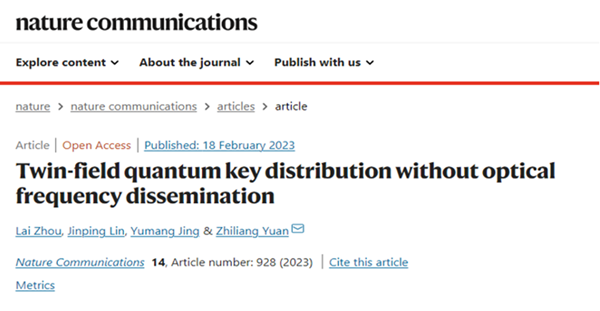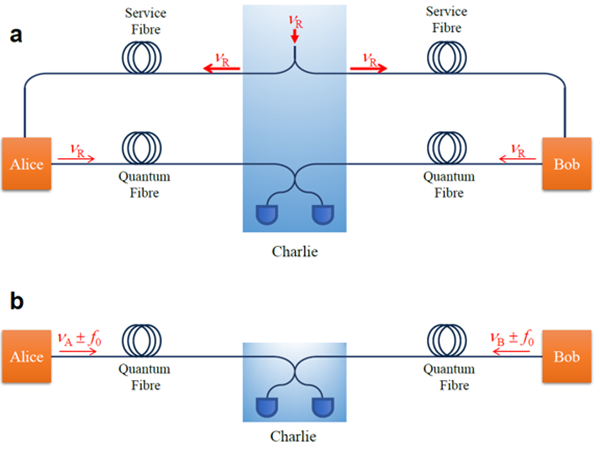Yuan Zhiliang's team makes breakthroughs in twin-field quantum key distribution system
Chief Scientist Yuan Zhiliang's team at the Beijing Institute of Quantum Information Science has achieved the first open architecture twin-field quantum key distribution system for 615 kilometers using frequency comb technology.
The research results were published on Feb 18, 2023 in the international academic journal Nature Communications.

Yuan Zhiliang team's research results as published on Nature Communications. [Photo/bjzpark.spotlightbeijing.com]
Quantum key distribution is based on the basic principles of quantum physics and one-time pad encryption, which can achieve unconditional secure communication. The traditional approach is to install service fibers between two distant locations as a transmission medium, and then complete the frequency locking of the two laser sources through time-frequency transmission or optical phase-locked loop technology. This closed fiber architecture is very unfavorable for the application of multi-node wide-area quantum secure networks.

a) Traditional closed fiber architecture; b) Open architecture developed by the Beijing Institute of Quantum Information Science. [Photo/bjzpark.spotlightbeijing.com]
Based on independently developed coherent sideband stabilization and remote laser frequency calibration technology, the team has developed a new open architecture, twin-field quantum key distribution system that does not require service fibers.
Compared with previous experimental results, the phase drift rate of the quantum signal light has been reduced by more than 1,000 times, greatly reducing the noise influence of the phase reference light and helping to break through the fiber quantum key distribution distance to the kilometer level.
The open architecture based on frequency comb technology is conducive to building multi-user and multi-node inter-city quantum secure networks in the future, and has important significance for distributed quantum networks based on single-photon interference.
The work was supported by the National Natural Science Foundation of China.
Link to the paper:
